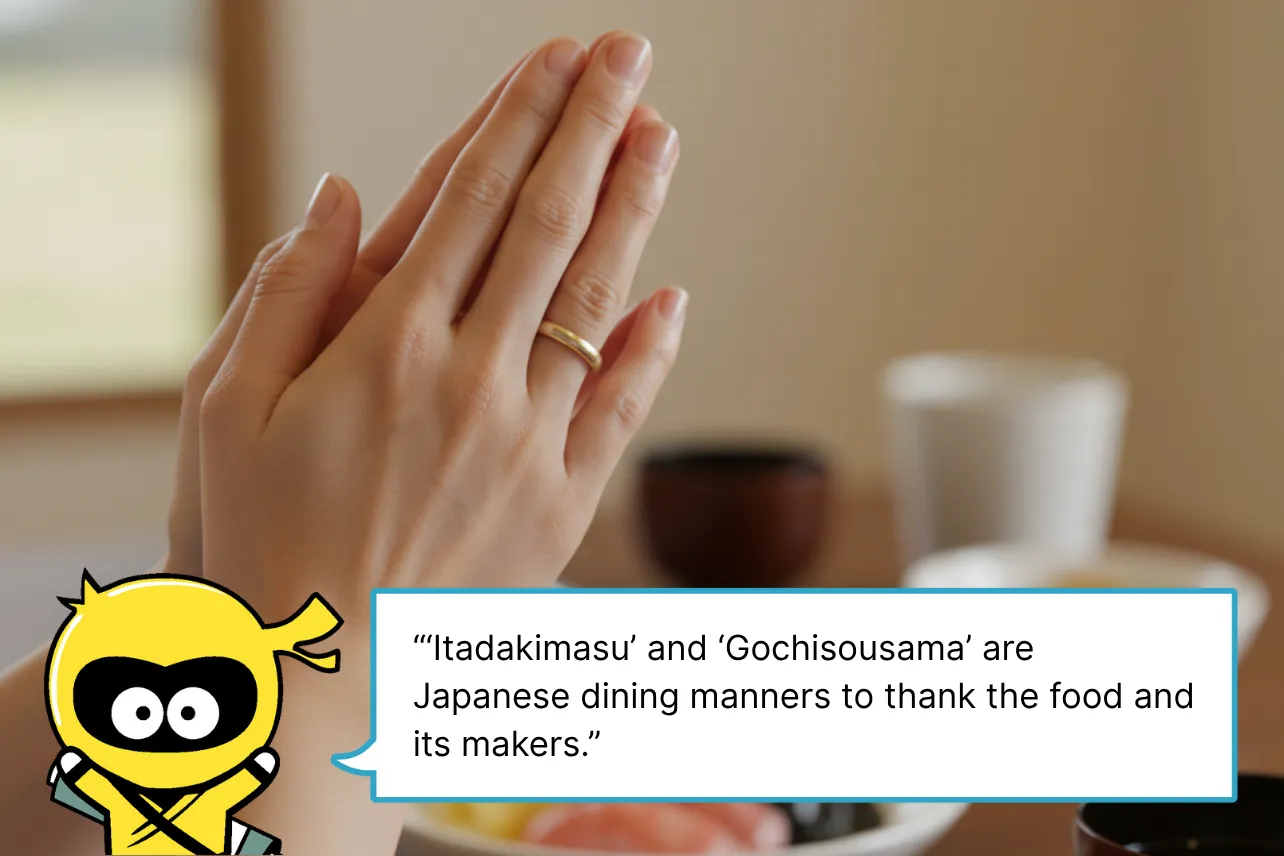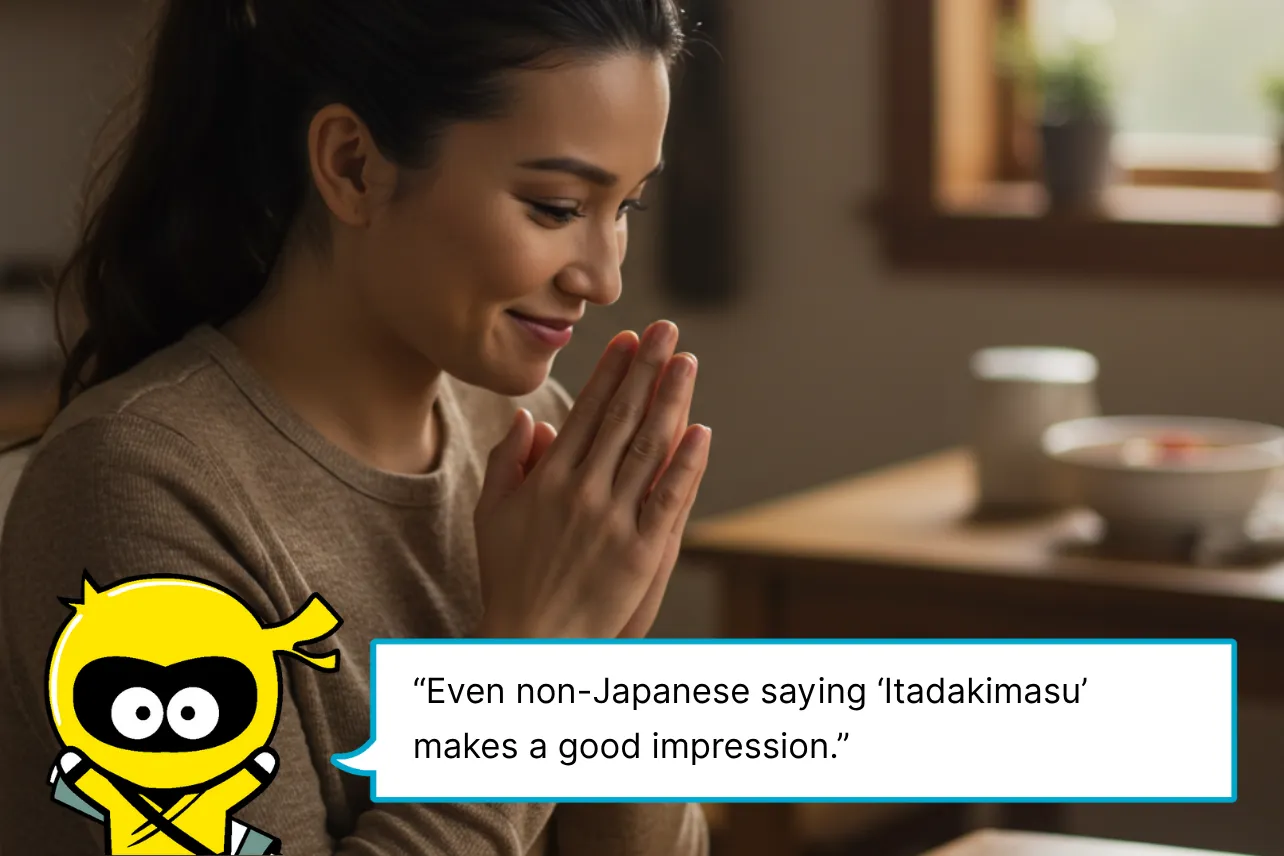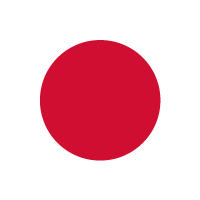

When you dine in Japan—whether in a restaurant or at someone’s home—you’ll often hear people say “Itadakimasu” before eating and “Gochisousama” after finishing. For many first-time visitors, this can feel confusing: “Do I have to say it too?” or “What’s the English translation?”. These phrases are not just habits but cultural expressions of gratitude to the ingredients and those who prepared the meal. Not knowing them may feel impolite, but using them correctly shows deep respect for Japanese culture. In this guide, we explain the meaning and origin of these expressions, the proper way to use them in restaurants, homes, and business settings, plus common questions travelers have. Learning this before your trip will make meals more enjoyable and interactions with locals smoother.
What “Itadakimasu” and “Gochisousama” Really Mean in Japan


These greetings are not religious rituals but words of gratitude for food and its preparation. Japanese children learn them naturally at school and at home, and visitors often notice them during ryokan stays or homestay meals. A polite way is to place your chopsticks down and quietly say “Itadakimasu” before eating, and “Gochisousama deshita” before leaving the table. Key etiquette tips: don’t say it with food in your mouth, don’t confuse it with a toast, and keep your voice modest. In restaurants, speak loud enough for the staff to hear, while at home or in business meals, it’s best to say it in sync with others.
Table Manners in Different Settings for Travelers
One challenge for visitors is that “Itadakimasu” and “Gochisousama” vary slightly depending on the setting.
Restaurants: After all dishes are served, join your hands and say “Itadakimasu.” Copying locals leaves a good impression. While it costs nothing, it enhances your dining experience and service quality. Avoid using it as a toast.
Homes and Ryokan: Always remember to say “Gochisousama” afterward as a way to thank the cook. Just one word after a meal can strengthen relationships significantly.
Business Meals: It is polite to follow your boss or colleagues and say it at the same timing. Skipping it might be seen as lacking manners.
In all cases, timing and tone matter most. Knowing this etiquette in advance will not only enrich your trip but also help smooth communication with Japanese people.
Should You Say Itadakimasu and Gochisousama in Restaurants?
Foreign visitors often wonder if it’s necessary in Japanese restaurants. The answer is yes, it’s recommended. It costs nothing but leaves a positive impression on staff and chefs, often leading to friendlier service.
Remember to keep your voice natural—not too loud, just enough for companions or staff to hear. Avoid saying “Itadakimasu” before everyone is served. While fast-food shops may skip it, using these phrases in traditional restaurants adds cultural value to your trip.
Proper Etiquette at Homes and Ryokan Dining
In Japanese homes and ryokan inns, saying “Itadakimasu” and “Gochisousama” is basic courtesy. Traditional meals like kaiseki require much effort, and greetings show appreciation.
Always wait until everyone is seated and served before saying “Itadakimasu.” At the end, say “Gochisousama” before standing up. These small gestures cost nothing but create warm connections and make your cultural experience richer during your stay.
Business Dining Etiquette: Building Trust Through Greetings
In Japan, dining etiquette is crucial in business. Saying “Itadakimasu” and “Gochisousama” is not just cultural but a way to build trust. The more formal or expensive the meal, the more important these words become.
Key rule: never start eating before others, and say “Gochisousama” after everyone has finished. Skipping them in a work setting may be seen as disrespectful. Observing your boss or hosts and following their lead is the safest and most respectful approach.
How to Translate Gochisousama into English
“Gochisousama” doesn’t mean just “delicious.” It conveys gratitude for both effort and ingredients, so direct translation is difficult. Phrases like “Thank you for the meal” or “That was delicious” are common, but they miss the cultural nuance of appreciating food as a gift of life.
A better approach is to adapt: “Thank you, it was great” in restaurants, or “Thanks for cooking” at home. Using the original Japanese phrase during your trip adds authenticity and connects you more deeply with locals.
Should Foreign Visitors Say Itadakimasu? Is It Rude Not To?


Travelers often ask if they should say it themselves. The clear answer: yes, you should. It shows respect for Japanese culture, costs nothing, and leaves a positive impression on hosts and restaurant staff.
Not saying it isn’t always considered rude, but in homes or business meals, eating silently may be seen as impolite. The key is timing—wait until everyone is ready. Saying these words enriches your travel experience and builds cultural bridges.
You might be interested in this
How Japanese Children Learn Itadakimasu and Gochisousama
Japanese children are taught these greetings from a young age at home and in schools. Before lunch, entire classes say “Itadakimasu,” and afterward they say “Gochisousama.” This helps instill respect for food and prevents waste.
Travelers who join homestays are often surprised by this practice and find it a wonderful part of Japanese education. The best way to teach children is through fun methods like songs and picture books, ensuring they learn cultural values naturally.
Itadakimasu and Gochisousama in Anime and Manga
In Japanese anime and manga, characters often say “Itadakimasu” before meals and “Gochisousama” afterward. This reflects real-life culture. Popular shows like Doraemon and Chibi Maruko-chan often include these scenes, making them great learning resources.
However, anime sometimes exaggerates expressions, so avoid imitating characters who shout loudly. In real life, a quiet and polite tone is proper. Learning through anime and then practicing in restaurants during your trip is a fun way to connect with Japanese culture.
FAQ
-
Is it rude not to say Itadakimasu in a restaurant?
No, but saying it shows respect and leaves a good impression. A quiet voice is enough for companions or staff to hear.
-
How do you translate Gochisousama into English?
There’s no direct translation. Common phrases include “Thank you for the meal” or “Thanks for cooking,” depending on the setting.
-
How do Japanese children learn these greetings?
At school and at home, children repeat them daily before and after meals. Travelers on homestays often witness this firsthand.
-
When should I say Itadakimasu at a business meal?
Wait until your boss or host begins. Never start eating alone, and say “Gochisousama” after everyone finishes.
Conclusion: Respecting Japanese Culture Through Dining Etiquette
“Itadakimasu” and “Gochisousama” are everyday greetings in Japan but carry deep cultural meaning. Throughout this article, we explored how to use them in restaurants, homes, and business situations with practical tips. By practicing these greetings during your trip, you’ll not only enjoy meals more but also create smoother interactions with Japanese people. For more cultural tips, check out our guides on Japanese restaurant etiquette and onsen towel manners to enrich your travel experience even further.




